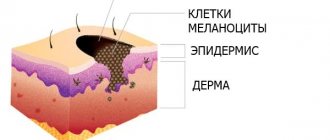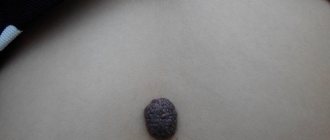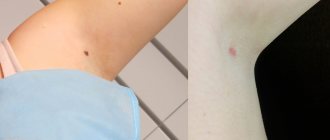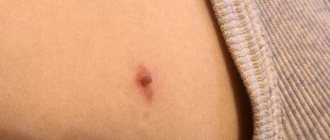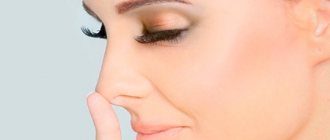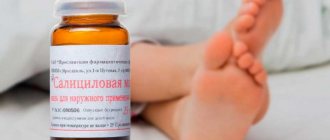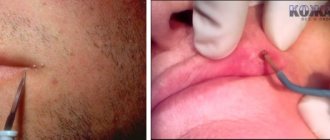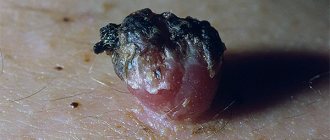To avoid complications and speed up the healing of an injured area of skin after removing a plantar wart or located in any other place, it is necessary to follow certain rules.
Upon completion of the wart removal procedure, medical doctors must instruct the patient in detail about the procedure and standards for wound care and select the optimal medications. Our clients can receive a full range of high-quality services in Moscow, at the clinic on Kashirskaya metro station, and in Ramenskoye, on the street. Chugunova, 21-A.
Principles of daily care
In the area of the removed wart and papilloma, a depression appears, the size of which depends on the size of the wart that was removed. In the first days, the skin may turn red, and swelling sometimes occurs around the removed lesions. After this, it is important for the patient to carefully care for the damaged skin so that healing occurs faster.
It is important not to cover the removed wart or papilloma with an adhesive plaster, so that a dry crust forms on the surface. It occurs due to coagulated blood fluid and lymph if the wound area is constantly ventilated. This scab will protect damaged skin from infection and avoid the occurrence of an inflammatory process.
In addition, make sure that the wound after cauterization with nitrogen or removal by another method is not excessively moist or dry. It is not recommended to use cosmetic body care products, foundations or other products. It is also important to avoid contact of damaged skin with household chemicals.
If the patient is suspected of sepsis, the scab on the wound is removed in a medical facility. It is dangerous to get rid of it on your own; only a doctor can remove it as harmlessly as possible. After this, the patient will need to treat the infected site of papilloma and wart removal with drugs containing antibiotics. Doctors recommend smearing removed warts with Levomekol ointment.
How to care after surgery
After surgical removal of papillomas and warts, the wound is additionally protected with a bandage treated with Miramistin.
When a papilloma is removed through surgery, wound care is performed differently. After the intervention, gauze bandages soaked in Miramistin are applied to the damaged area. It is important to regularly do dressings, during which the wound is smeared with antiseptics. The rehabilitation period after removal of papillomas and warts by surgical intervention takes from 2 weeks.
Anti-alkali agents
Supercleaner consists of sodium chloride, sodium bicarbonate and sodium hydroxide. Sodium hydroxide (caustic soda) is a caustic alkali.
Mountain celandine consists of concentrated extracts of celandine, gentian, string, cacaly spear-shaped (crow's feet) and golden rhododendron. This viscous liquid can leave an alkaline burn on the skin.
To neutralize alkalis, apply a sterile napkin moistened with a solution of hydrochloric acid (2%), acetic acid solution (1%), boric acid solution (0.5% - 3%) or hydrochloric acid solution (0.1%) to the washed wound. .
If you don’t have the necessary medications on hand, you can use powdered citric acid or lemon juice. The powder is diluted with water in a ratio of 1:10.
Concentrated acids should not be used, as they can cause acid burns.
How long does it take for a wound to heal after removal of warts and papillomas?
After removing the wart, noticeable pits remain on the skin, the depth of which depends on the size of the roots of the formation. The growth is removed, capturing nearby skin in order to remove all cells infected with the virus. After getting rid of papilloma, an inflammatory process often occurs, since in the process not only the upper layers of the epithelium are affected, but also quite deep ones. Signs in the form of swelling and redness disappear within 2 days if the patient follows the doctor’s recommendations.
If this does not happen, this indicates that the processing was not carried out properly. In such a situation, it is important to consult a doctor. The wound after removal of the wart and papilloma heals in about 2 weeks. At this time, it becomes covered with a scab consisting of blood and lymph. New healthy skin grows under the scab, which is reliably protected by the crust from bacteria entering the wound.
Symptom of acid burn
After a burn, a scab appears on the affected area over time.
The wound left after exposure to acid is covered with a dry and hard scab with clear boundaries. It may vary in color depending on the type of chemical that caused the injury.
If Solcoderm accidentally comes into contact with healthy tissue around the wart, the skin becomes red and itchy, and a strong burning sensation is felt. The wound is covered with a light yellow-green or yellow-brown scab with clear boundaries.
After exposure to Kolomak, the burned skin becomes very swollen and itchy. A pinkish-brown scab appears on the wound surface. It quickly falls away, revealing the red, bleeding surface of the wound.
When burned with Verrucacid or Ferresol, the surface of the skin first becomes white, then gradually changes color to brown.
How to treat a wound to prevent relapse?
Anti-inflammatory ointments should be applied to wounds where papillomas and warts were removed to avoid relapse.
Based on the fact that the appearance of papillomas and warts is provoked by a virus, after removal, in some situations they form on the previous areas of the skin. This happens when the patient has just gotten rid of the growth and has not completed a course of drug therapy, which includes the use of antiviral and immunostimulating drugs. But, in addition to drug treatment, it is important to act on formations locally in order to avoid infection of the healthy dermis in the area where papillomas and warts are located. When the skin has healed, doctors prescribe the use of the following ointments with an antiviral effect:
- "Oksolin";
- "Cycloferon";
- "Viferon";
- "Panavir".
If you follow all the instructions of your doctor, you will be able to avoid negative consequences. Treatment for human papillomavirus is a long process that requires patience. When, after a certain time after removal of the formations, their former location begins to burn, itch or itch, this may indicate their relapse. In this case, it is important to apply an antiviral medicine to the affected area and then send it to the doctor.
Antidote to acids
Wart removers contain different active ingredients. A correctly selected antidote will minimize the degree of tissue damage.
Solcoderm contains acetic, lactic and nitric acids, as well as oxalic acid dihydrate. Kolomak burns warts with lactic and salicylic acid.
If the skin is damaged by acids, sterile wipes moistened with a solution of sodium bicarbonate (4%) are applied to the wound surface after washing it under water.
A solution of baking soda (2%) will also help neutralize acids. Wash the wound with a soda solution, then apply a cotton swab moistened with a weak solution of ammonia (0.5%) to it. Instead of a soda solution, you can treat the wound with soapy water.
Verrukacid and Ferrezol contains carbolic acid (phenol). Phenol and its derivatives (cresol, xylenol) are insoluble in water. Therefore, after a burn with carbolic acid, the wound surface of the wart must be treated with ethyl alcohol (40–70%) or polyethylene glycol.
The most effective way to remove phenol from the skin is to alternate between washing the wound under running water and treating it with ethyl alcohol. After washing, apply a sterile bandage moistened with glycerin or milk of lime to the wound.
Restoring skin at home
After the scab peels off, the patient will need to take especially careful care of the wound. In order to increase skin regeneration, the following methods are used:
- They take vitamin complexes, which include vitamins A, E, K and C. In addition, it is recommended to eat food rich in these beneficial substances. They are found in vegetables, fermented milk and fish. Proper and balanced nutrition will not only help restore skin function, but also increase immunity, which subsequently resists the activation of the human papilloma virus.
- They use cosmetic products that contain elastin, collagen and keratin.
- Cosmetics with hyaluronic acid can give dry skin tone and increase its protection from the negative effects of the environment, creating a protective film on the surface of the dermis.
- To smooth out dry and rough dermis at the site of a former wart or papilloma, gentle peelings containing glycolic acid are used.
Many patients are concerned about the question: is it possible to wash after removal of tumors? Of course, you need to follow the rules of hygiene, but do it carefully so as not to damage the crust formed on the surface. Mostly, doctors allow you to swim the very next day after removal of papillomas and warts. Do not rub the damaged area of the body with a towel; instead, gently blot it.
First aid
Timely first aid will help reduce the degree of exposure of the aggressive substance to the body:
- If the chemical gets on your clothing, you should remove it as soon as possible so that your skin does not come into contact with the wet fabric.
- Immediately after contact with the chemical, rinse the affected area under running cold water. You need to hold the burned area under running water for at least 30–60 minutes to remove as much of the dangerous liquid as possible from the surface of the wart.
- If it was not possible to wash the burn with running water in the first few minutes, later you need to keep the burned area under water longer, up to 2 hours. Rinsing should gradually reduce pain and burning.
- If the product accidentally gets on the mucous membranes or in the eyes, you should immediately rinse them with water.
- To neutralize the remnants of the chemical agent absorbed into the body tissue, it is necessary to treat the wound with an antidote to it.
How to prevent scars and scars from appearing?
Areas of the body where papillomas and warts have been removed should be treated with Contractubex gel to avoid scarring.
Since getting rid of scars and scars is a rather problematic task, requiring the use of special hardware technologies, for example, laser resurfacing, it is easier to prevent their occurrence. The medicine that will help avoid the formation of scars at the site of the removed wart or papilloma is determined by the attending physician. Self-treatment and selection of medications is prohibited.
Often, the gel “Contractubex” is used, the active component of which is heparin. This substance has an antithrombic effect, which promotes the resorption of scars. The additional component allantoin has a keratolytic effect, and Serae extract helps relieve inflammation, if any, or prevent its development. With the help of Contractubex, it is possible to get rid of fresh scars and scars within a month. If the scar tissue is old, then it is important to use the medication until it completely resolves. It is recommended to carry out the procedure of rubbing the gel 2 or 3 times a day, when you have free time.
Removing a wart requires exclusively qualified assistance, which can only be obtained in a medical institution. In order for the rehabilitation period to pass quickly and without complications, it is important for the patient not to try to take any treatment measures on his own. This is especially true for therapy with folk remedies. Only a doctor can choose the right preparations for treating a wound after eliminating papilloma and warts, based on the individual characteristics of the individual patient and the specific case. It is also not recommended to resort to removing the growth in beauty salons without first visiting a dermatologist and oncologist.
Other types
Various aggressive agents are used to cauterize warts. Treating a tumor with a concentrated solution of hydrogen peroxide (perhydrol) can cause skin burns.
Hydrogen peroxide must be neutralized with a weak solution of citric acid or lemon juice. The wound surface after a burn with hydrogen peroxide is covered with a grayish-white scab.
When burned with iodine solution, a dark spot appears, the skin around the wound swells and turns red. Sometimes there is burning and itching. Later, the skin at the burn site begins to peel off.
You can neutralize the iodine solution with soapy water, chalk powder or sugar solution (20%).
The most dangerous in terms of impact is hydrofluoric acid. It has a toxic effect on the entire body. The burned area should be immediately treated with an emulsion of magnesium oxide in glycerin or glycerin.
Possible complications after removal
Complications after removal of papillomas and warts occur in case of infection through the wound and are fraught with suppuration.
The most serious complication is wound infection after removal of a papilloma or wart. Sometimes it occurs even when the patient complies with all the doctor’s instructions. When an infection gets into the wound, suppuration will begin under the crust, and the patient’s body temperature may rise. In this situation, you should immediately visit a medical facility, where the doctor will perform the required manipulations and prescribe additional care for the already infected wound.
Removing papilloma and warts in a beauty salon also sometimes provokes the development of complications. This is due to the fact that some workers do not have medical education and proper experience in eliminating growths. Even if the salon has many positive reviews and a cheap cost of the procedure, you should not resort to such removal.
How to get rid of plantar warts: the most effective methods
Wart growths are very common throughout the world, with most of them located on the legs. Plantar warts are not fundamentally different from other types of such formations, and received their name mainly because of their location. Warts are very easy to recognize, but quite difficult to cure - this is the main problem with their existence.
Plantar warts are benign growths (growths) on the fingers and soles of the feet and are treated by dermatologists. They have obvious symptoms, and in more than a quarter of all victims they go away on their own within 3-4 months; but have a high risk of recurrence at the same point.
Etiology of the phenomenon
The only cause of plantar warts is the human papillomavirus, which has many varieties; but in this case, types 1, 2 and 4 are involved. The first type of virus leads to the appearance of deep formations on the sole; the second type - numerous warts in the form of a mosaic;
Infection with the virus occurs through direct contact with the carrier of the pathogen or with the environment where the virus came from the patient. It enters the body through damaged skin - cuts, scratches, insect bites, cracks, abrasions, etc. Most often, infection occurs in baths, saunas and swimming pools. Some factors provoke infection:
The penetration of a virus into the body does not always cause pathology. The development of warts begins with a decrease in immune defense, and therefore all factors that weaken the body stimulate the disease - infectious diseases, intoxication, physical overload, stress.



